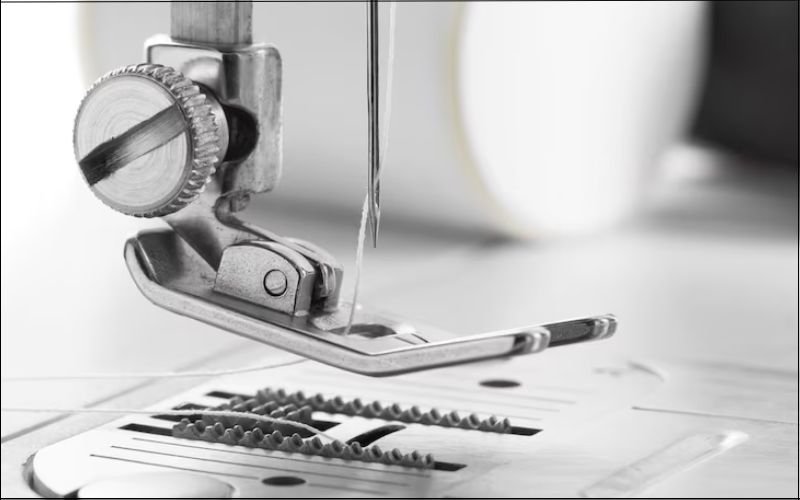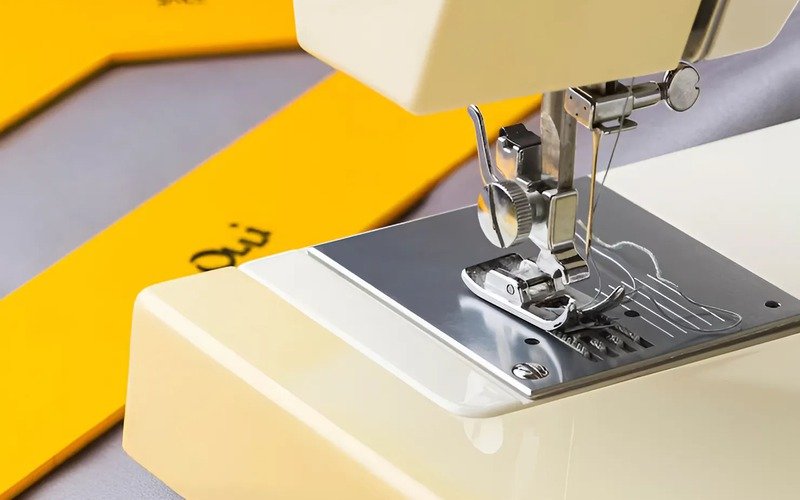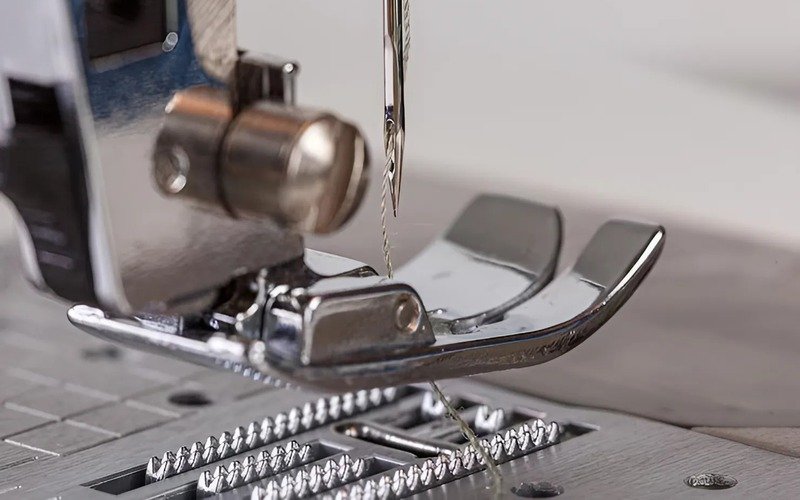What Is Feed Dog on Sewing Machine? Easy Beginner Guide
Hello, sewing friends! sewing machines have many parts, and sometimes they can look a little complicated. But learning about them one part at a time is easy. It can make your sewing much more fun.
When you understand your sewing machine, you can use it better. It also helps you guess what might be wrong if you have a small problem. Knowing your tools helps you make wonderful things and makes you a more confident sewist.
Today, we are going to talk about a small but very important part of your sewing machine called the feed dog. It’s tiny, but your machine really needs it to sew properly!
1. What is a feed dog? a simple explanation
So, what exactly is a feed dog? The feed dog is a special part found inside your sewing machine. It is right under where the needle works.
It looks like a set of little metal teeth or small metal bars. These teeth are usually arranged in two or more short rows. Feed dogs are made of strong metal. Their top surface is often a bit rough or jagged, like tiny rows of teeth. This roughness is important because it helps them gently grip your fabric.
At Packlove, we believe that understanding the ‘what’ and ‘why’ of tools makes creating easier. These little metal teeth are the primary movers of your fabric. Their design is clever!

2. Where can you find the feed dog on your sewing machine?
Now that you know what a feed dog is, where can you find it on your sewing machine?
Look at the flat metal part on your sewing machine bed where the needle goes down. This is called the needle plate (or sometimes the throat plate). The needle plate is the flat metal piece with a small hole for the needle to pass through. It often has lines to guide your fabric.
You will see some small, long openings or slots in this needle plate. The feed dogs are located just under these slots. The top ‘teeth’ of the feed dogs poke up through these slots when the machine is working. This is how they reach up to touch and move your fabric. So, you usually only see the very top part of the feed dogs.
It’s common for beginners to wonder about parts that aren’t fully visible. The feed dogs are a bit hidden, but their tops peek through the needle plate slots to do their important job!

3. What does the feed dog do?
3.1. How the feed dog works
The feed dogs don’t just sit still; they are very active! They move in a special, repeated pattern for every stitch your machine makes.
- First, they move up, poking their teeth through the slots in the needle plate.
- Then, they move forward (this means they pull towards the back of your sewing machine). As they move forward, they take the fabric with them.
- Next, they move down, disappearing below the needle plate again.
- Finally, they move back to their starting position, ready to begin the cycle for the next stitch.
This up-forward-down-back movement happens very quickly. It is perfectly timed with the needle going up and down.
When the feed dogs move up and their teeth are showing, they gently grip the bottom side of your fabric. Their rough surface helps them hold on. The most important part of their job is when they move forward. This is when they pull your fabric along.
This action moves the fabric just the right amount. So the needle can make the next stitch in a new spot. This is what creates a nice, even line of stitches instead of just a pile of thread in one place! Think of the feed dogs like tiny, careful hands under your fabric. They gently pull the fabric through the machine, one small step at a time for each stitch.
3.2. Teamwork: works with the presser foot
The feed dog has an important helper called the presser foot. The presser foot is the part you lower onto your fabric before you start sewing. It often looks like a little ski.
The presser foot gently presses down on the top of the fabric. At the same time, the feed dogs grip and pull the fabric from the bottom. They work together like a sandwich. The presser foot is the top slice of bread. Your fabric is the yummy filling. The feed dogs are the bottom slice of bread. This ‘sandwich’ holds the fabric securely.
This teamwork helps the fabric move smoothly. It stops it from slipping around, so your stitches are straight and even.
At Packlove, we appreciate teamwork. Just like the feed dog and presser foot work together for perfect stitches, the different features of our packaging, like our zipper bags or poly mailers, combine to protect what’s inside.

4. Why is the feed dog so important for good sewing?
4.1. Making even stitches
Why is this pulling action by the feed dog so important? Because it’s the key to making even stitches!
The feed dog moves the fabric a precise amount for each stitch. If you set your machine for long stitches using the stitch length dial (the setting on your machine that tells the feed dogs how far to move the fabric), the feed dog moves the fabric more.
If you choose short stitches, it moves the fabric less. This control is what makes your sewing look neat and professional. When all your stitches are the same size and spaced evenly, your seams look tidy and are also stronger.
4.2. Moving the fabric correctly
Imagine trying to sew without the feed dogs, or if they weren’t working. Your fabric would just stay in one place! The needle would go up and down in the same spot, making a big knot of thread but no actual seam.
Or, if the feed dogs are dirty or damaged, they might not pull the fabric evenly. This can cause the fabric to slip, get pulled sideways, or not move enough. This can lead to:
- Your stitches might be all different sizes (some tiny, some huge).
- The fabric can get puckered, wrinkled, or bunched up under the needle.
- You might get what sewers often call a ‘thread nest’ (that frustrating bunch of tangled threads on the underside of your fabric).
4.3. Why it matters to you: better sewing results!
So, you can see that a feed dog that works well is super important for happy sewing! It means your fabric moves smoothly, your stitches are even, and your finished projects will look much better. They will also be more durable.
Whether you’re sewing a simple hem or attaching one of Packlove’s beautiful custom woven labels to your handmade item, consistent and even fabric feed is essential. It gives that professional, high-quality finish. A well-cared-for machine with good feed dogs makes all the difference!

5. What if my feed dog isn’t working right?
How can you tell if your feed dog might be having a problem? Here are some simple signs:
- Fabric doesn’t move at all: The needle goes up and down, but your fabric stays in the same spot. It just won’t feed through the machine.
- Fabric moves, but stitches are very uneven: Your fabric moves, but the stitches are super tiny, like pinpricks. Or, they are suddenly very long and loose. Or, the stitches are all different sizes in the same seam, even though you haven’t changed the stitch length setting.
- Fabric gets stuck or bunches up often: Your fabric keeps getting jammed under the needle. Or it bunches up a lot underneath, creating wrinkles as you try to sew.
If you see these signs, don’t panic! Often, it’s something simple. The most common reason is that the feed dogs need cleaning. Lint and dust can build up and stop them from moving freely. (We’ll give you a cleaning tip next!).
Another thing to check: Some sewing machines have a lever or switch to lower the feed dogs. This is called ‘dropping the feed dogs’. It is used for things like free-motion embroidery or sewing buttons. Make sure this lever isn’t accidentally in the ‘down’ or ‘disengaged’ position. Check your sewing machine’s instruction manual to see if your machine has this feature and where to find it. It needs to be in the ‘up’ position for normal sewing.
If cleaning and checking the feed dog lever (if you have one) don’t help, your machine might need a check-up from a sewing machine repair expert.

6. A quick tip for your feed dog
Here’s a quick and very important tip to keep your feed dog working well: Keep it clean!
As you sew, tiny bits of thread, fluff from your fabric (called lint), and dust can fall down. They can get stuck in and around the feed dogs and under the needle plate. If too much of this lint and dust builds up, it can stop the feed dogs from moving smoothly. They might not grip the fabric properly.
Important safety note: Before you clean any part of your sewing machine, always turn it off and unplug it from the power outlet.
Most sewing machines come with a small, soft lint brush (a special small brush for cleaning lint). This is the best tool for the job. Gently use the brush to sweep away any visible lint and dust from the feed dogs. Also clean the slots in the needle plate.
If your sewing machine’s instruction manual shows you how, you might be able to carefully remove the needle plate. This lets you clean underneath it more thoroughly. But, only do this if your manual says it’s okay for your specific machine model and clearly explains how to do it safely.
Always read your sewing machine’s instruction manual first! It will have the best and safest cleaning instructions for your machine. Every machine can be a little different.
Read more:
So, now you know all about the feed dog! It’s a small but truly mighty part of your sewing machine. It’s like a busy little helper with teeth. It is always working to move your fabric smoothly so you can create wonderful, even stitches.
We hope this simple guide from Packlove has helped you understand what the feed dog is. We hope you know where to find it, the big job it does, and why it’s so important for happy and successful sewing. Keep learning about your amazing sewing machine! Most importantly, have lots of fun creating!






















